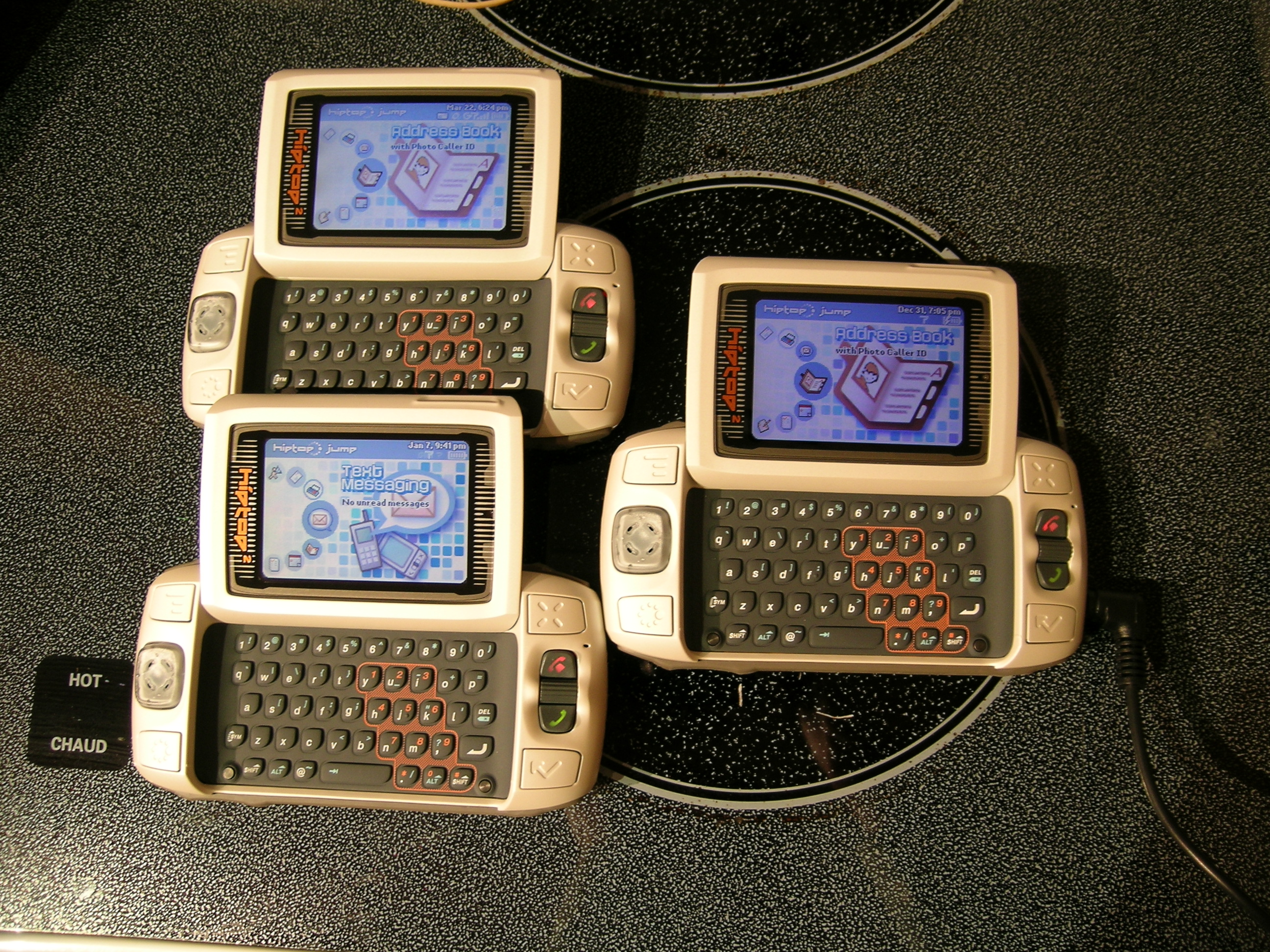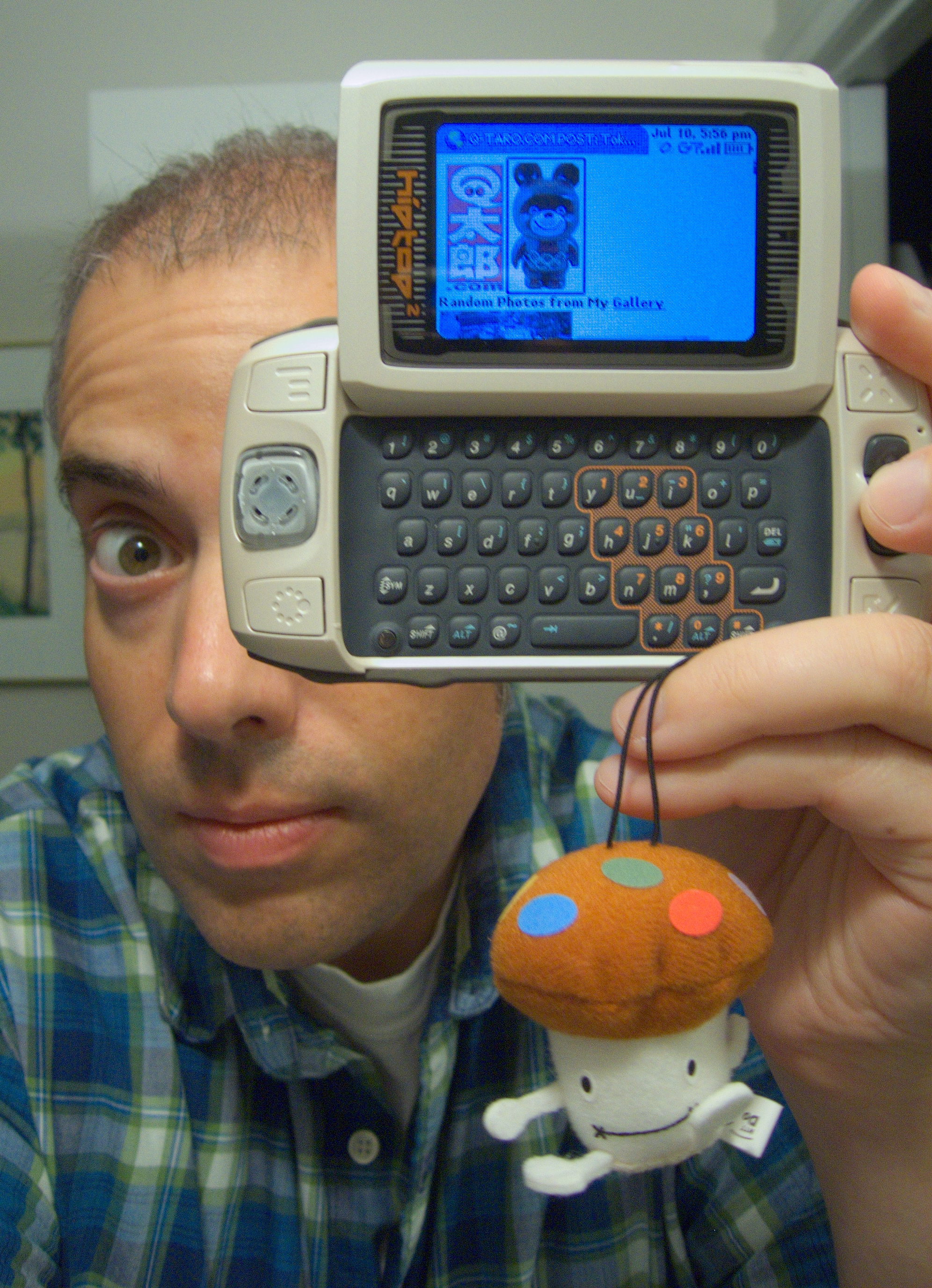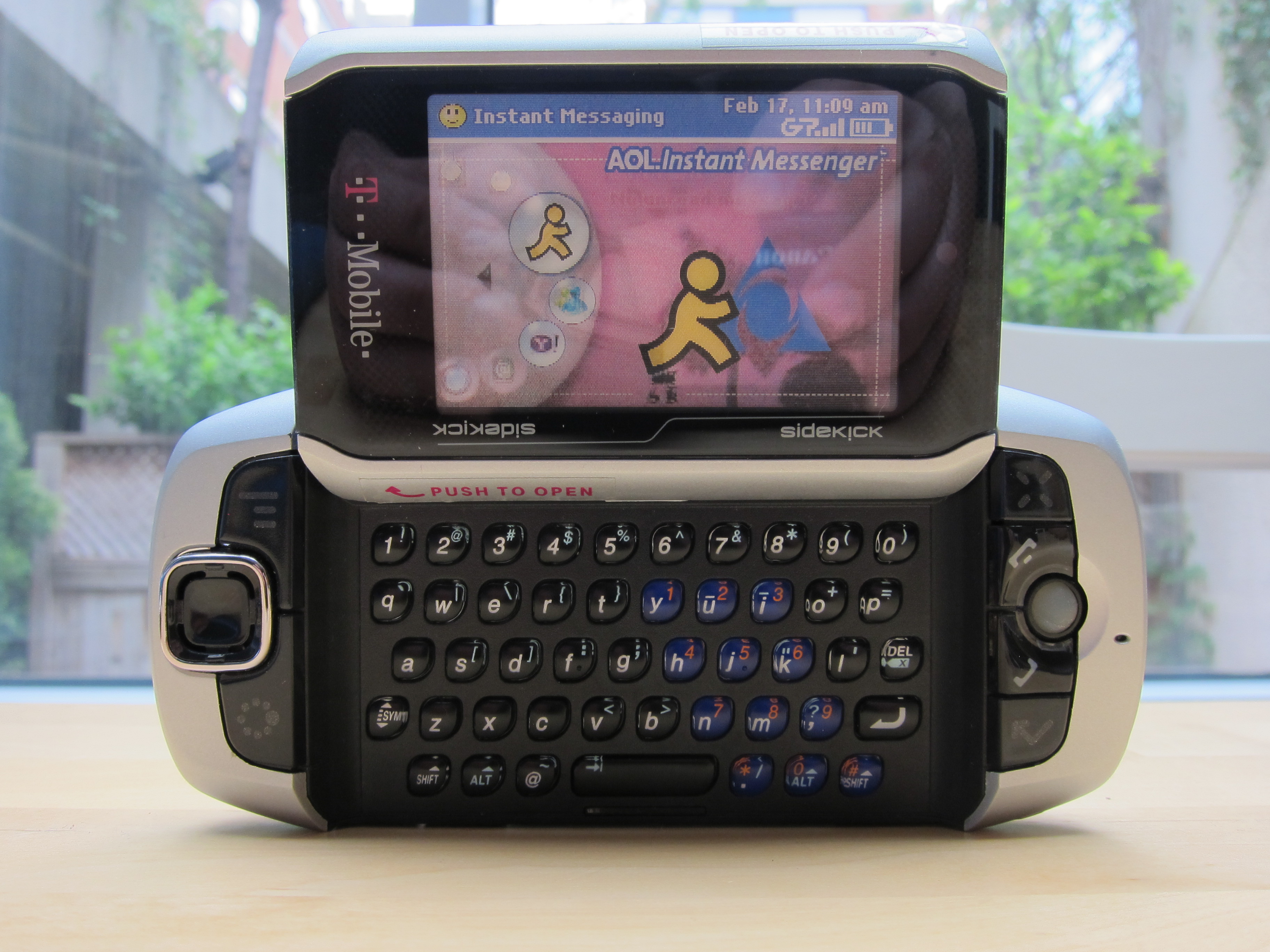A lot had changed in the four years since I had last used my Fido hiptop2 full-time. The biggest news was that Danger, the company behind the hiptop/Sidekick line and responsible for its back-end servers, had been bought up by Microsoft. As the hiptop’s cloud sync solution was a competitor to Microsoft’s Outlook Web Access, the hiptop servers were quickly shut down.
This might explain how Mobilicity was able to procure an untold number of second-generation Sidekick LX devices and sell them with its own custom firmware. Unlike my hiptop2 there was no web login for the Mobiflip, nor was the prescient app store anywhere to be found on the device. There was the excellent Opera Mini web browser and a third installment of the bouncing ball game “Bob”, but that was about it.
I knew all of this going in, of course, and could really only justify my hundred-dollar Mobiflip purchase as a curiosity for what could have been. I brought it along with me to a Mobilicity event, hosted by Howard Chui of HowardForums fame. When I plopped it on a table it was greeted with a round of derisive laughter from the other bloggers in attendance. Clearly the hiptop’s day had come and gone.
Its legacy lives on, however. On-device app stores are now, as we know, de rigueur for any device that calls itself a smartphone. And if you didn’t know, Andy Rubin — co-founder and CEO of Danger, Inc. — was also a driving force behind Android in its early days. He remains in charge of the platform at Google, which can only be a good thing.
]]>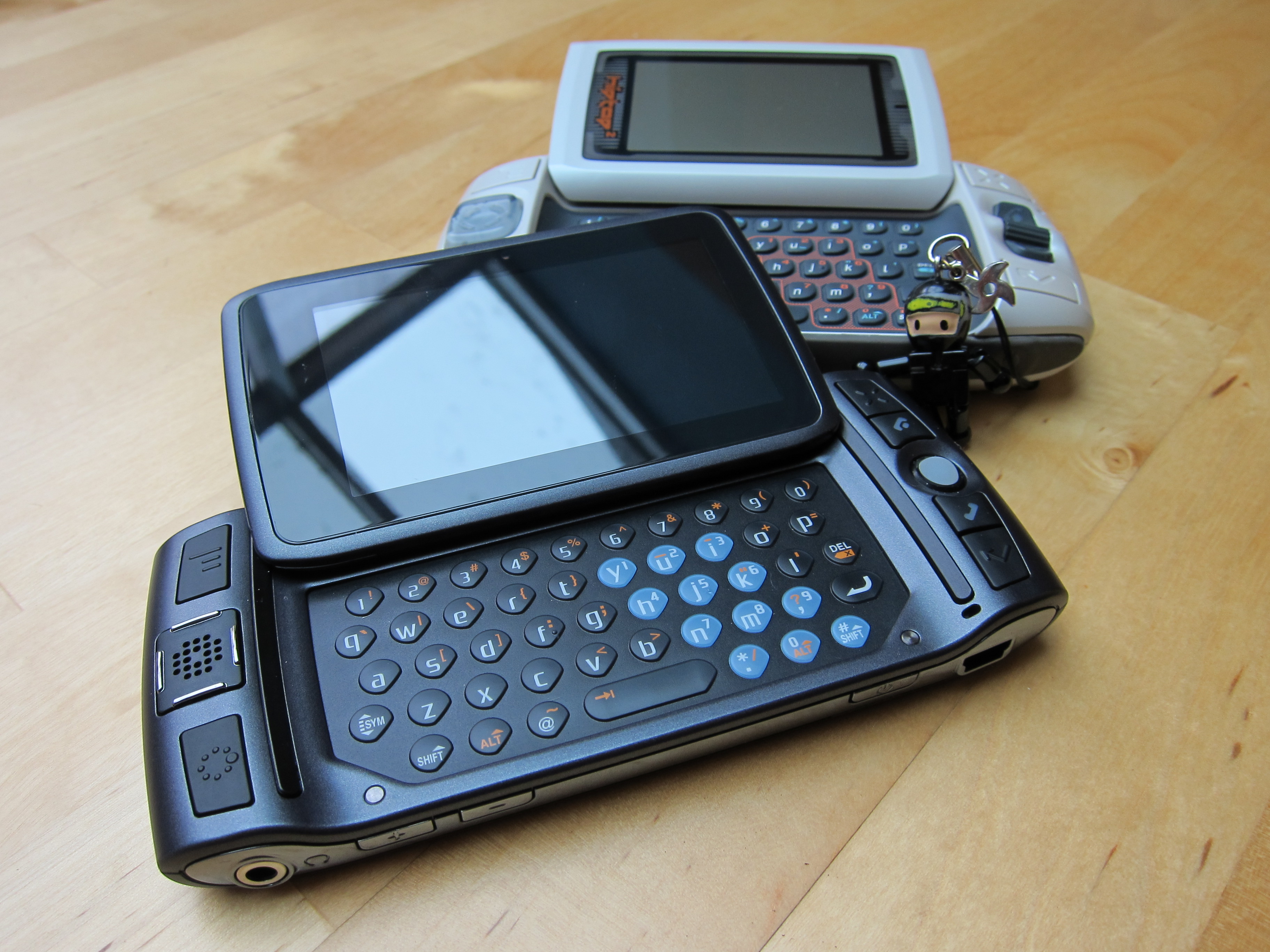
Maybe I needed closure on that hiptop3 that Fido never brought to market, or maybe I just had more money than sense; whatever the reason, when Mobilicity released the Sidekick LX 2009 — I mean, “Mobiflip” — I had to get one.
I mean, it was only a hundred bucks…
Earlier that year Microsoft had shut down Danger’s cloud sync service, reducing the Mobiflip to a standalone device, with no option to sync anything beyond photos and videos.
It did, at least, have a kick-ass mobile browser.
QVGA videos, anyone? Without Danger’s backend the Mobiflip was little more than a toy. After posting about it on my blog it went almost directly back into the box, until I found a suitable candidate for a hand-me-down.
]]>The original hiptop didn’t even have a camera; for tiny, blurry photos you had to buy a separate accessory that plugged into (of all things) the headset jack. But its innovative design provided ample room for a near-perfect qwerty keypad. They might well have called this phone the fliptop, as the keys were hidden beneath the screen until needed. To access them you’d simply flip the screen panel out — a combination of magnets and a sturdy hinge would make it pivot a full one hundred and eighty degrees, snapping into the open position with a satisfying click. It never failed to impress, myself included.
The second generation hiptop2 added a built-in 320×240 pixel camera with flash, still fixed-focus and well behind the times but better than nothing. Amazingly, the flip-out screen now sat flush with the rest of the phone when closed; this meant that the keypad was set in a bit deeper than before, but no matter — it was still a joy to use. And navigating the Danger OS was a breeze thanks to four humongous buttons surrounding the screen. Plus a scrollwheel. Plus a four-way directional pad that doubled as the earpiece, of all things!
As great as the hardware was, it wasn’t the hiptop’s stand-out feature. Like BlackBerry’s Internet Service, data on all hiptops was routed through a central server to optimize bandwidth and ease congestion on carriers’ networks. But unlike BlackBerry, Danger’s solution offered two significant advantages for the user. The first was unlimited data — that’s right, all you could eat for a mere twenty Canadian dollars per month. Web browsing, emails with attachments, instant messages… didn’t matter what it was, it was all included. So long as you weren’t roaming internationally you’d never have to pay anything more than the standard monthly fee. Of course, when you were travelling the hiptop was a terrible choice. Data was an all-or-nothing proposition, a hard lesson I learned after racking up over two hundred dollars in roaming charges when I turned my hiptop2 data on over breakfast one morning in the UK.
The persistent Internet connection provided another benefit for hiptop users: with every device came a free web portal where personal data and emails were stored. You didn’t have to worry about syncing data to any one desktop computer; so long as that computer had a web browser you could access everything on your hiptop from there. The portal also featured a webmail client, and since hiptops supported multiple push email accounts you’d need never worry about BlackBerry envy.
The price for all this convenience was learned later, when it was time to get my data off of the hiptop servers. Danger sold a plug-in for Microsoft’s Outlook called Intellisync, which gave me a local copy of my address book on a Windows computer. Photos could be downloaded individually from the hiptop web portal, but calendar entries, notes and to-do items had to be transcribed by hand if I wanted to keep them. And I did.
Danger’s proxied data service was similar in another way to BlackBerry’s BIS: It went down a lot. It happened often enough to be a familiar pain, rendering the device all but useless except for phone calls and SMS. I would always know when the data service came back up; my hiptop would vibrate with a loud grunt as everything on it was restored.
Still, my hiptops were fantastic devices, right up there with the best smartphones I’ve ever had. My hiptop2 was dependable enough to survive two weeks in Uganda in 2005. Though I had no data there I found a way to post short dispatches to my blog via SMS. Part of that trip was a three-day journey to and from the Bwindi Impenetrable National Park to see gorillas in their natural habitat. I can still remember spotting the first cell tower on the long drive back, and firing up my hiptop to let the world know that I was still alive.
That same hiptop was memorable for another, more dubious achievement. It holds the first and so far only breakup text I’ve ever received. Ouch.
]]>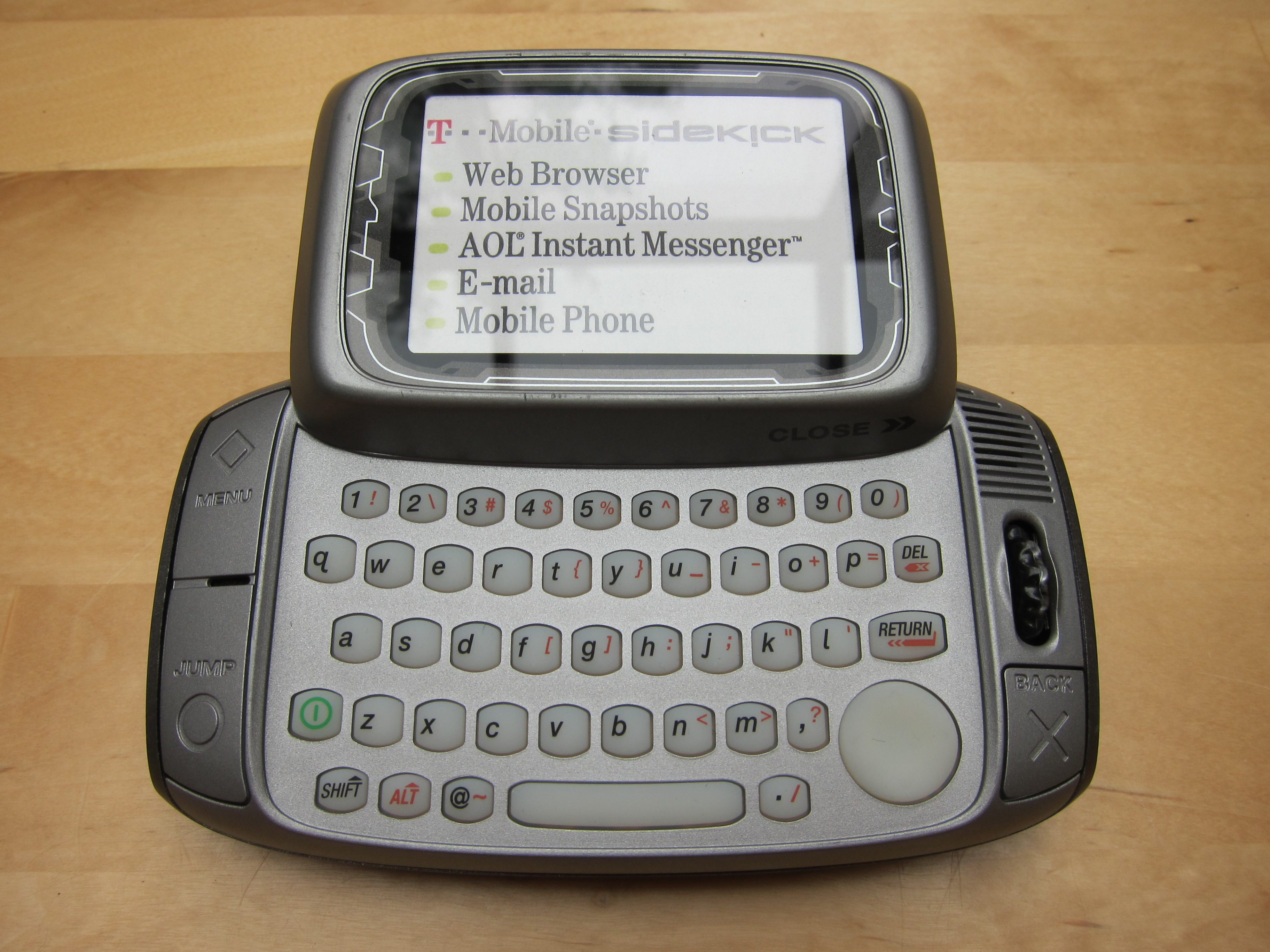
I no longer have my first-generation Danger hiptop, but I do have this T-Mobile dummy model — they call it the Sidekick down south.
Those fat and squishy rubber keys made it just about the best qwerty smartphone ever. The hiptop also had a persistent, proxied connection to the Internet; you can read more about that in the blog entry I posted when I first got one.
Hot stuff! Here are no less than three hiptop2s hanging out on my stove. If I remember correctly I had already upgraded to the second-gen model but wanted a backup device, and due to a screwup at Fido I somehow ended up with one more.
Thanks to its built-in loop I was able to adorn my hiptop with all manner of cell phone charms. This oversized Docomodake was really just for show — ordinarily I’d be sporting a much more tasteful ninja.
And here’s the hiptop that could have been. Fido was all set to start selling the hiptop3, but by then they had been fully assimilated into the evil Rogers empire and the order was cancelled. I can almost hear CEO Ted cackling from the boardroom: “Unlimited data? I don’t think so!”
Shortly thereafter I gave up my hiptop2 and moved on. You can read my requiem for it here.
]]>
